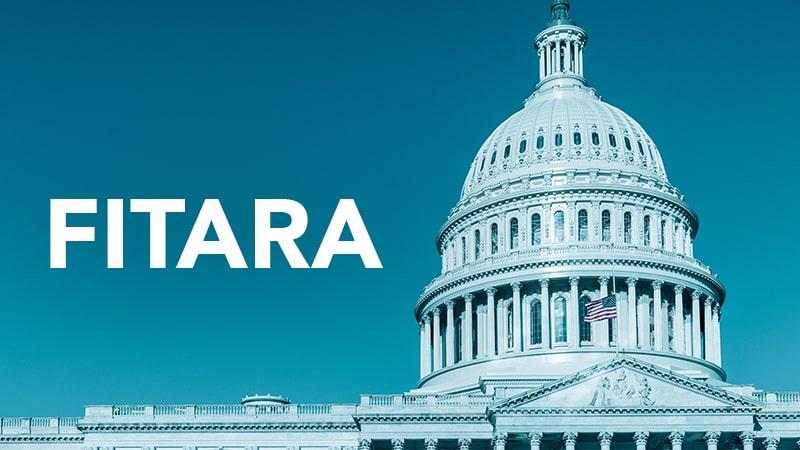
Many Federal agencies received lower grades on the 17th edition of the FITARA Scorecard issued by Rep. Gerry Connolly, D-Va., today, due at least in part to a significant reshuffling of the IT-related categories that the scorecard uses to issue overall grades for the 24 largest Federal agencies.
The FITARA Scorecard grades are compiled with input from the Government Accountability Office (GAO) and have been published semi–annually – usually by the House Oversight and Accountability Committee – since 2015.
Today’s release of the 17th edition of the FITARA Scorecard marks a continuing departure – begun last fall – from the committee’s publication of the scorecard, followed by a hearing on the grades by its government technology-focused subcommittee. Instead, the scorecard is being issued by the office of Rep. Connolly – who is ranking member of the House Oversight Subcommittee on Cybersecurity, Information Technology, and Government Innovation – who will hold a roundtable session today at 9 a.m. in the Rayburn House Office Building to discuss the scorecard results.
As usual, the best way to make sense of the multicolored FITARA scorecard is to view the results on MeriTalk’s FITARA Dashboard.
Top-Line Trends
On the latest scorecard, 11 agencies saw their overall grades decline – most by one full letter grade – but by two full letter grades in the cases of the Education Department, State Department, and the Health and Human Services Department (HHS). Only one agency – the Defense Department – earned a higher grade, and 12 agencies saw their grades unchanged on the latest scorecard.
Only one agency – the U.S. Agency for International Development (USAID) – earned an “A” grade on the most recent scorecard, unchanged from the previous scorecard issued last September. Both the Education Department and Labor Department slid back from their “A” grades on the previous scorecard.
Three agencies – HHS, State, and the Transportation Department – received overall grades of “D,” but no agency received a failing grade.
In total, the new grades show a marked departure from the trend seen in the 16th edition of the FITARA Scorecard, when eight agencies saw their overall grades improve by one full grading letter, and 16 agencies saw their grades unchanged from the prior scorecard. No agency received a lower trade on the 16th edition of the scorecard, and none received lower than a “C” grade overall.
Grading Category Changes
At least some of the upheaval in grading trends can be traced to changes in the grading categories used on the 17th edition of the scorecard. The latest scorecard employs six categories that contribute to agencies’ overall grades – versus the seven used on the previous scorecard.
On top of that, only four of the grading categories from the previous scorecard – Agency CIO Authority Enhancements, Modernizing Government Technology Act, Cyber, and progress on transitioning to the Networx communications contract – remain in the new scorecard.
The 17th edition of the scorecard drops for grading purposes the previous Data Center Modernization category and adds two new categories – Cloud Computing and CIO Investment Evaluation. Notably for the recent trend toward lower overall grades, nearly all agencies had earned “A” grades in the Data Center Modernization category on the previous scorecard.
In another new twist to the scorecard, four categories that had previously been included as grade-generating topics remain on the scorecard but are no longer contributing factors to agency’s overall FITARA Scorecard grades. Those are: Transparency and Risk Management, Portfolio Review Savings, Data Center Consolidation, and CIO Direct Reporting.
By the Letters
Here is a quick look at the losers, gainers, and steady grades on the 17th edition of the FITARA Scorecard.
One Agency Improved
Only the Defense Department earned a higher grade, rising to a “B” from a “C.”
Eleven Agencies Declined
A total of 11 agencies earned lower grades on the latest scorecard:
- Commerce Department declined to “C” from “B”;
- Education Department declined to “C” from “A”;
- Energy Department declined to “C” from “B”;
- HHS declined to “D” from “B”;
- Homeland Security Department declined to “C” from “B”;
- Justice Department declined to “C” from “B”;
- Labor Department declined to “B” from “A”;
- State Department declined to “D” from “B”;
- Transportation Department declined to “D” from “C”;
- General Services Administration declined to “C” from “B”;
- Office of Personnel Management declined to “C” from “B”;
12 Agencies Hung Steady
The remaining 12 agencies maintained the same grade on the latest scorecard compared to the 16th edition issued in September 2023:
- USAID, with an “A” grade;
- Agriculture Department, with a “B” grade;
- Housing and Urban Development Department, with a “C” grade;
- Interior Department, with a “B” grade;
- Treasury Department, with a “B” grade;
- Veterans Affairs Department, with a “C” grade;
- Environmental Protection Agency, with a “B” grade;
- NASA, with a “B” grade;
- National Science Foundation, with a “B” grade;
- Nuclear Regulatory Commission, with a “B” grade;
- Small Business Administration, with a “C” grade; and
- Social Security Administration, with a “B” grade.
